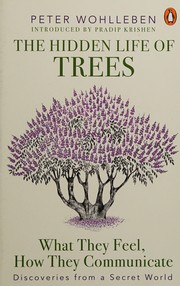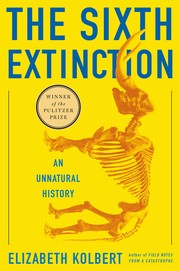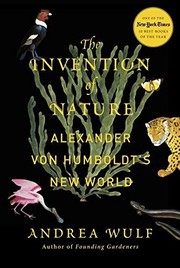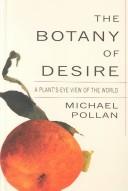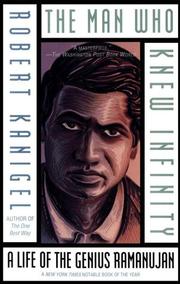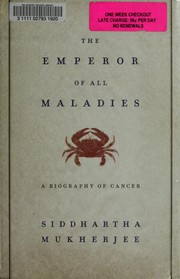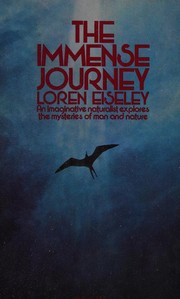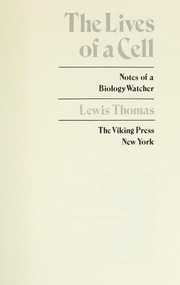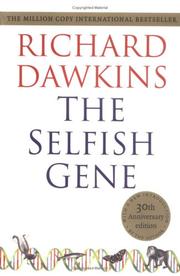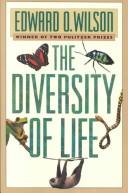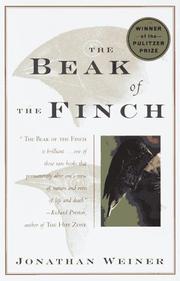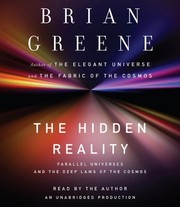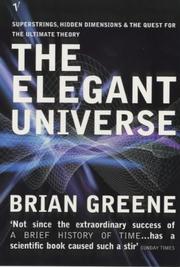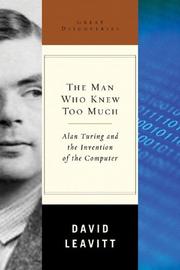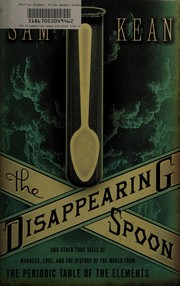If you’re fascinated by the world around you, then you’ll love diving into the 20 best books about living and non living things. These captivating reads explore the wonders of nature, the mysteries of the universe, and the interconnectedness of all living and non living things. Whether you’re a science enthusiast, a nature lover, or just curious about the world, these books will open your eyes to the beauty and complexity of our planet. Get ready to be inspired and enlightened by these amazing books on living and non living things!
Contents
- 1 20 Best Books About Living And Non Living Things
- 2 The Hidden Life of Trees
- 3 The Sixth Extinction: An Unnatural History
- 4 The Immortal Life of Henrietta Lacks
- 5 The Invention of Nature: Alexander von Humboldt’s New World
- 6 The Botany of Desire: A Plant’s-Eye View of the World
- 7 The Soul of an Octopus
- 8 The Gene: An Intimate History
- 9 The Man Who Knew Infinity: A Life of the Genius Ramanujan
- 10 The Hidden Half of Nature: The Microbial Roots of Life and Health
- 11 The Emperor of All Maladies: A Biography of Cancer
- 12 The Immense Journey
- 13 The Lives of a Cell: Notes of a Biology Watcher
- 14 The Origin of Species
- 15 The Selfish Gene
- 16 The Diversity of Life
- 17 The Beak of the Finch: A Story of Evolution in Our Time
- 18 The Hidden Reality: Parallel Universes and the Deep Laws of the Cosmos
- 19 The Elegant Universe: Superstrings, Hidden Dimensions, and the Quest for the Ultimate Theory
- 20 The Man Who Knew Too Much: Alan Turing and the Invention of the Computer
- 21 The Disappearing Spoon: And Other True Tales of Madness, Love, and the History of the World from the Periodic Table of the Elements
- 22 Conclusion
- 23
- 24 Discover Best 5 Senses Books: 20 Key Titles, 2024 Updated
- 25 Books on Heroes For Middle School: 2024 Update of the Best Titles
- 26 Books on Daily Routines: 2024 Update of the Best Titles
20 Best Books About Living And Non Living Things
The Hidden Life of Trees
by Peter Wohlleben
The Hidden Life of Trees by Peter Wohlleben is an intriguing book on living and non-living things that delves into the fascinating world of forests and the interconnectedness of trees. Wohlleben takes readers on a captivating journey through the forest, revealing the complex social networks and communication systems that exist among trees. Through his insightful observations and scientific research, Wohlleben uncovers the remarkable ways in which trees support and communicate with each other, challenging our perception of them as living and non-living things. This book about living and non-living things offers a profound understanding of the natural world and the intricate relationships between all living and non-living things. It is a must-read for anyone interested in gaining a deeper appreciation for the wonders of nature.
The Sixth Extinction: An Unnatural History
by Elizabeth Kolbert
The Sixth Extinction: An Unnatural History by Elizabeth Kolbert is a captivating exploration of the impact of human activity on the delicate balance of life on Earth. Through a combination of scientific research and compelling storytelling, Kolbert delves into the history of mass extinctions and the current crisis facing our planet. This thought-provoking book on living and non-living things examines the interconnectedness of species and the devastating consequences of human actions on the environment. Kolbert’s narrative is both informative and alarming, shedding light on the urgent need for conservation and preservation efforts. With a focus on biodiversity and the intricate web of life, this book about living and non-living things challenges readers to confront the reality of our rapidly changing world. The Sixth Extinction is a must-read for anyone interested in the future of our planet and the complex relationship between living and non-living things.
The Immortal Life of Henrietta Lacks
by Rebecca Skloot
The Immortal Life of Henrietta Lacks is a captivating book about living and non living things that delves into the story of Henrietta Lacks, whose cells were taken without her knowledge and became the first immortal human cell line. Author Rebecca Skloot weaves together the scientific breakthroughs made possible by Lacks’ cells with the ethical and moral implications of using human tissue for research. The book explores the intersection of medicine, race, and ethics, and raises thought-provoking questions about the book on living and non living things. Skloot’s narrative is both informative and deeply personal, as she builds a relationship with Lacks’ family and uncovers the untold story behind the woman whose cells have had an immeasurable impact on medical research. It’s a compelling and eye-opening read for anyone interested in the complex relationship between living and non living things.
The Invention of Nature: Alexander von Humboldt’s New World
by Andrea Wulf
The Invention of Nature: Alexander von Humboldt’s New World by Andrea Wulf is a captivating exploration of the life and legacy of the visionary naturalist Alexander von Humboldt. This groundbreaking biography delves into Humboldt’s pioneering work in the study of the interconnectedness of all living and non-living elements of the natural world. Wulf paints a vivid portrait of Humboldt’s travels through South America, his revolutionary ideas about the web of life, and his influence on the likes of Charles Darwin and Henry David Thoreau. The book is a fascinating blend of science, history, and adventure, offering a compelling look at the man who shaped our modern understanding of the environment and the intricate relationships between living and non-living things. A must-read for anyone with a curiosity about the natural world.
The Botany of Desire: A Plant’s-Eye View of the World
by Michael Pollan
The Botany of Desire: A Plant’s-Eye View of the World by Michael Pollan is a captivating exploration of the intricate relationship between humans and plants. In this thought-provoking book on living and non-living things, Pollan examines the co-evolution of plants and humans, focusing on four specific plants: the apple, the tulip, marijuana, and the potato. Through these plant stories, Pollan delves into the ways in which plants have shaped human desires and behaviors, and how humans have in turn influenced the evolution of these plants. The book offers a fresh perspective on the interconnectedness of all living and non-living things, and challenges readers to reconsider their relationship with the natural world. With its engaging narrative and insightful research, this book about living and non-living things is a must-read for anyone interested in the fascinating connections between humans and the plant kingdom.
The Soul of an Octopus
by Sy Montgomery
The Soul of an Octopus by Sy Montgomery is a captivating book about the extraordinary intelligence and emotional depth of these enigmatic creatures. Through her immersive experiences with octopuses, Montgomery explores the interconnectedness of all living beings and challenges our understanding of what it means to be alive. This thought-provoking book delves into the fascinating world of cephalopods and their complex relationships with humans and other creatures. With vivid storytelling and insightful observations, Montgomery invites readers to reconsider their perceptions of the natural world and reflect on the interconnectedness of all life. Whether you’re a marine enthusiast or simply curious about the mysteries of the ocean, this book will leave you in awe of the intricate connections between living and non-living things.
The Gene: An Intimate History
by Siddhartha Mukherjee
The Gene: An Intimate History by Siddhartha Mukherjee is a captivating exploration of the fundamental building blocks of life. This thought-provoking book delves into the intricate world of genetics, unraveling the mysteries of heredity and the impact of genes on our lives. Mukherjee takes readers on a fascinating journey through the history of genetics, from the discovery of the gene to the latest breakthroughs in genetic research. Through compelling storytelling and insightful analysis, the author examines the complex interplay between nature and nurture, shedding light on the profound implications of our genetic code. Whether you’re a science enthusiast or simply curious about the intricacies of life, this book about living and non living things offers a compelling and illuminating read that will leave you with a deeper understanding of the forces that shape our existence.
The Man Who Knew Infinity: A Life of the Genius Ramanujan
by Robert Kanigel
The Man Who Knew Infinity: A Life of the Genius Ramanujan by Robert Kanigel is a captivating biography of the mathematical genius, Srinivasa Ramanujan. This book delves into the life of Ramanujan, a self-taught mathematician from India, who made groundbreaking contributions to the field of mathematics. Kanigel’s vivid storytelling brings to life Ramanujan’s journey, from his humble beginnings in India to his collaboration with the renowned mathematician G.H. Hardy at Cambridge University. The book explores Ramanujan’s unique insights into numbers, infinite series, and other mathematical concepts, shedding light on his extraordinary mind and the challenges he faced as an outsider in the mathematical community. The Man Who Knew Infinity is a compelling exploration of the intersection between passion, perseverance, and the mysteries of the universe, making it a must-read for anyone interested in the fascinating world of numbers and their relationships to the universe.
The Hidden Half of Nature: The Microbial Roots of Life and Health
by David R. Montgomery and Anne Biklé
The Hidden Half of Nature: The Microbial Roots of Life and Health by David R. Montgomery and Anne Biklé is a fascinating exploration of the intricate relationship between living organisms and their non-living environment. This thought-provoking book delves into the world of microbes, shedding light on their crucial role in shaping the natural world and influencing the health of both the planet and its inhabitants. Through a captivating blend of scientific research and personal narrative, the authors uncover the hidden connections between soil, plants, and human health, offering a fresh perspective on the interdependence of all living and non-living elements. This compelling book on living and non living things challenges readers to reconsider their understanding of the natural world and inspires a newfound appreciation for the complex web of life that surrounds us.
The Emperor of All Maladies: A Biography of Cancer
by Siddhartha Mukherjee
The Emperor of All Maladies: A Biography of Cancer by Siddhartha Mukherjee is a captivating exploration of the history, science, and personal stories behind the ’emperor’ of all diseases. This Pulitzer Prize-winning book delves into the complex and multifaceted nature of cancer, tracing its origins from ancient times to the modern era of cutting-edge research and treatment. Mukherjee’s masterful storytelling weaves together the lives of patients, doctors, and researchers, creating a compelling narrative that is both informative and deeply moving. With its vivid portrayal of the battle against cancer, this book is a must-read for anyone seeking to understand the profound impact of this relentless adversary on both living and non-living organisms. The Emperor of All Maladies is an essential addition to the library of anyone interested in the intricate interplay between living and non-living entities.
The Immense Journey
by Loren Eiseley
The Immense Journey by Loren Eiseley is a profound exploration of the interconnectedness of all life on Earth. Eiseley takes readers on a captivating journey through time and space, delving into the intricate relationships between living organisms and their environments. Through lyrical prose and insightful observations, he illuminates the profound mysteries of the natural world, offering a thought-provoking reflection on the coexistence of living and non-living entities. This book on living and non-living things invites readers to ponder the intricate web of life, from the smallest microorganisms to the grandeur of the cosmos. Eiseley’s unique blend of scientific knowledge and poetic storytelling makes The Immense Journey a timeless classic that continues to inspire awe and wonder in readers of all ages.
The Lives of a Cell: Notes of a Biology Watcher
by Lewis Thomas
The Lives of a Cell: Notes of a Biology Watcher by Lewis Thomas is a fascinating exploration of the interconnectedness of all living and non-living entities. In this captivating book on living and non-living things, Thomas draws on his background as a physician and biologist to examine the relationships between different organisms and the environment. Through a series of thought-provoking essays, he delves into the complexities of cells, the behavior of social insects, and the intricacies of human society. With lyrical prose and keen insights, Thomas offers a unique perspective on the web of life, making this book about living and non-living things a must-read for anyone curious about the natural world. The Lives of a Cell is a timeless classic that continues to inspire readers to marvel at the wonders of the living and non-living world.
The Origin of Species
by Charles Darwin
The Origin of Species is a groundbreaking book on living and non-living things by Charles Darwin. Published in 1859, this book about living and non-living things revolutionized the way we understand the natural world. In it, Darwin presents his theory of evolution through natural selection, which explains how species adapt and change over time. He provides a wealth of evidence from various scientific disciplines to support his ideas, challenging the prevailing beliefs about the creation and diversity of life. This living and non-living things book sparked intense debate and controversy, but its impact on our understanding of the natural world is undeniable. Darwin’s work continues to influence scientific research and our perception of the world around us.
The Selfish Gene
by Richard Dawkins
The Selfish Gene by Richard Dawkins is a thought-provoking book about living and non-living things. Dawkins introduces the concept of genes as ‘selfish’ entities that drive the process of evolution, shaping the behavior and characteristics of living organisms. He argues that genes are the fundamental units of selection, perpetuating themselves through generations by influencing the survival and reproduction of their hosts. Dawkins explores the implications of this perspective on topics such as altruism, kin selection, and the evolution of social behavior. With engaging storytelling and compelling scientific evidence, The Selfish Gene challenges readers to reconsider their understanding of living and non-living things, and the forces that drive their existence. This book is a must-read for anyone interested in evolutionary biology and the interconnectedness of all living and non-living things.
The Diversity of Life
by Edward O. Wilson
The Diversity of Life by Edward O. Wilson is a captivating exploration of the intricate web of life on Earth. This groundbreaking book on living and non-living things takes readers on a journey through the vast array of species that inhabit our planet, from the smallest microorganisms to the largest mammals. Wilson’s in-depth analysis delves into the complexity of ecosystems and the interdependence of all living organisms. Through vivid storytelling and meticulous research, he emphasizes the urgent need for conservation and the preservation of biodiversity. This thought-provoking book about living and non-living things sheds light on the beauty and fragility of the natural world, making a compelling case for the protection of our planet’s diverse habitats and species. A must-read for anyone passionate about the environment and the interconnectedness of all living and non-living things.
The Beak of the Finch: A Story of Evolution in Our Time
by Jonathan Weiner
The Beak of the Finch by Jonathan Weiner is a captivating book on living and non-living things that follows the groundbreaking research of biologists Peter and Rosemary Grant on the Galápagos Islands. Through their meticulous study of finches, the Grants provide compelling evidence for the process of evolution in action. Weiner skillfully weaves together scientific discovery, personal anecdotes, and the history of evolutionary theory to create a narrative that is both informative and engaging. The book about living and non-living things offers a fascinating insight into the intricate mechanisms of natural selection and adaptation, and its impact on the diverse array of species that inhabit our planet. With vivid storytelling and insightful analysis, The Beak of the Finch is a must-read for anyone interested in the marvels of evolution and the interconnectedness of all living and non-living things.
The Hidden Reality: Parallel Universes and the Deep Laws of the Cosmos
by Brian Greene
The Hidden Reality by Brian Greene is a fascinating exploration of the concept of parallel universes and the fundamental laws of the cosmos. This captivating book delves into the possibility of multiple universes coexisting alongside our own, each with its own unique set of physical laws and properties. Greene, a renowned physicist, takes readers on a mind-bending journey through the theoretical framework of parallel universes, discussing cutting-edge scientific theories and mind-boggling thought experiments that challenge our understanding of reality. This thought-provoking book on living and non-living things offers a compelling look at the interconnectedness of the universe and the potential for unseen dimensions and realities beyond our current comprehension. With its engaging narrative and accessible explanations, The Hidden Reality is a must-read for anyone intrigued by the mysteries of the cosmos.
The Elegant Universe: Superstrings, Hidden Dimensions, and the Quest for the Ultimate Theory
by Brian Greene
The Elegant Universe by Brian Greene is a fascinating exploration of the fundamental nature of the universe, delving into the world of superstrings, hidden dimensions, and the quest for the ultimate theory. This groundbreaking book takes readers on a journey through the realms of physics, tackling complex concepts with clarity and insight. Greene’s engaging storytelling and accessible explanations make this book about living and non-living things a captivating read for both science enthusiasts and general readers. Through vivid analogies and thought-provoking explanations, he unravels the mysteries of space, time, and the fabric of reality, offering a new perspective on the interconnectedness of the universe. Whether you’re a science buff or simply curious about the nature of existence, The Elegant Universe offers a compelling exploration of the mysteries that surround us.
The Man Who Knew Too Much: Alan Turing and the Invention of the Computer
by David Leavitt
The Man Who Knew Too Much: Alan Turing and the Invention of the Computer by David Leavitt is a fascinating exploration of the life and achievements of the groundbreaking mathematician and computer scientist, Alan Turing. Leavitt delves into Turing’s work during World War II, where he played a crucial role in breaking the German Enigma code, as well as his pioneering efforts in the development of early computers. The book provides a rich portrait of Turing’s personal and professional life, his struggles with his identity as a gay man in a time when it was illegal, and his tragic end. Leavitt’s engaging storytelling and meticulous research make this a compelling read for anyone interested in the history of computing and the intersection of technology and humanity.
The Disappearing Spoon: And Other True Tales of Madness, Love, and the History of the World from the Periodic Table of the Elements
by Sam Kean
The Disappearing Spoon: And Other True Tales of Madness, Love, and the History of the World from the Periodic Table of the Elements by Sam Kean is a fascinating book about the elements of the periodic table and their impact on human history. Kean delves into the quirky, surprising, and sometimes bizarre stories behind each element, making the book an engaging and informative read for anyone interested in science and history. With a blend of humor and insight, Kean explores the connections between the elements and the world around us, shedding light on the complex relationships between living and non-living things. This living and non-living things book offers a unique perspective on the elements that make up our world, making it a must-read for anyone curious about the building blocks of the universe.
Conclusion
Exploring the world of living and non-living things through literature can be an enriching and enlightening experience. The 20 best books about living and non-living things offer a fascinating journey into the complexities and wonders of our natural world. From scientific explorations to philosophical reflections, these books provide a diverse and captivating look at the intricate relationships between living organisms and their environment. Whether you’re a science enthusiast or simply curious about the natural world, these books are sure to inspire and educate. Dive into these captivating reads and expand your understanding of the interconnectedness of all things.
Which Living And Non Living Things book is best?
The best book on Living And Non Living Things can vary with personal preference, but three widely recommended titles are:
- The Hidden Life of Trees by Peter Wohlleben,
- The Sixth Extinction: An Unnatural History by Elizabeth Kolbert,
- The Immortal Life of Henrietta Lacks by Rebecca Skloot.
Each offers valuable insights and could be a great starting point.
What are the best books to learn about Living And Non Living Things?
For those looking to learn about Living And Non Living Things, there is a wealth of literature that can provide a comprehensive understanding of the subject. Some of the most highly recommended books include:
- The Hidden Life of Trees by Peter Wohlleben,
- The Sixth Extinction: An Unnatural History by Elizabeth Kolbert,
- The Immortal Life of Henrietta Lacks by Rebecca Skloot,
- The Invention of Nature: Alexander von Humboldt’s New World by Andrea Wulf,
- The Botany of Desire: A Plant’s-Eye View of the World by Michael Pollan,
- The Soul of an Octopus by Sy Montgomery,
- The Gene: An Intimate History by Siddhartha Mukherjee,
- The Man Who Knew Infinity: A Life of the Genius Ramanujan by Robert Kanigel,
- The Hidden Half of Nature: The Microbial Roots of Life and Health by David R. Montgomery and Anne Biklé,
- The Emperor of All Maladies: A Biography of Cancer by Siddhartha Mukherjee
These books offer a range of perspectives on Living And Non Living Things, covering various aspects and approaches to the subject.
What are the best books on Living And Non Living Things?
The best books on Living And Non Living Things include:
- The Hidden Life of Trees by Peter Wohlleben,
- The Sixth Extinction: An Unnatural History by Elizabeth Kolbert,
- The Immense Journey by Loren Eiseley,
- The Lives of a Cell: Notes of a Biology Watcher by Lewis Thomas,
- The Man Who Knew Infinity: A Life of the Genius Ramanujan by Robert Kanigel,
- The Soul of an Octopus by Sy Montgomery.
Each offers unique insights into the subject. While these books on the topic of Living And Non Living Things are highly regarded, it’s important to note that any list of ‘best’ books is subjective and reflects a range of opinions.
What are the best Living And Non Living Things books of all time?
Choosing the best Living And Non Living Things books of all time can vary depending on who you ask, but seven titles that are often celebrated include
- The Hidden Life of Trees by Peter Wohlleben,
- The Sixth Extinction: An Unnatural History by Elizabeth Kolbert,
- The Botany of Desire: A Plant’s-Eye View of the World by Michael Pollan,
- The Man Who Knew Infinity: A Life of the Genius Ramanujan by Robert Kanigel,
- The Emperor of All Maladies: A Biography of Cancer by Siddhartha Mukherjee,
- The Lives of a Cell: Notes of a Biology Watcher by Lewis Thomas,
- and The Immense Journey by Loren Eiseley.
Each of these books has made a significant impact in the field of Living And Non Living Things and continues to be influential today.

